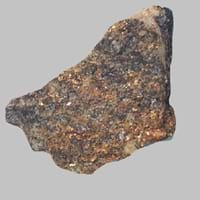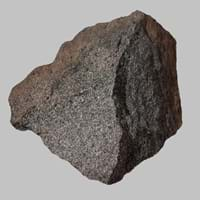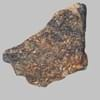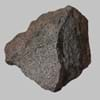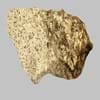Definition
Adakite is an intermediate to felsic volcanic rock that has geochemical characteristics of magma which is said to be formed by partial melting of altered basalt that is subducted below volcanic arcs
Boninite is a mafic extrusive rock which is high in magnesium and silica content, formed in fore-arc environments, typically during the early stages of subduction
Origin
Adak, Aleutian Islands
Japan
Discoverer
Defant and Drummond
Unknown
Etymology
From Adak, Aleutian Islands
From its occurrence in the Izu-Bonin arc south of Japan
Class
Igneous Rocks
Igneous Rocks
Sub-Class
Durable Rock, Medium Hardness Rock
Durable Rock, Hard Rock
Other Categories
Fine Grained Rock, Medium Grained Rock, Opaque Rock
Fine Grained Rock, Opaque Rock
Texture
Porphyritic
Aphanitic to Porphyritic
Color
Black, Brown, Light to Dark Grey
Bluish - Grey, Brown, Colourless, Green, Grey
Durability
Durable
Durable
Appearance
Dull and Soft
Dull and Soft
Interior Uses
Decorative Aggregates, Floor Tiles, Homes, Hotels, Kitchens
Decorative Aggregates, Homes, Kitchens
Exterior Uses
As Building Stone, As Facing Stone, Office Buildings
Garden Decoration, Office Buildings
Other Architectural Uses
Whetstones
Not Yet Used
Construction Industry
As Dimension Stone, Cobblestones, Rail Track Ballast, Roadstone
As a Flux in the Production of Steel and Pig Iron, As a Sintering Agent in Steel Industry to process Iron Ore, As Dimension Stone, Cement Manufacture, for Road Aggregate, Making natural cement, Manufacture of Magnesium and Dolomite Refractories
Medical Industry
Not Yet Used
Not Yet Used
Antiquity Uses
Monuments, Sculpture, Small Figurines
Artifacts
Commercial Uses
Commemorative Tablets, Pottery, Used in aquariums
An Oil and Gas Reservoir, Cemetery Markers, Creating Artwork, Soil Conditioner, Source of Magnesia (MgO)
Types
Not Available
Not Available
Features
Has High structural resistance against erosion and climate, Host rock for Diamond, Very fine grained rock
Available in Lots of Colors and Patterns, High Mg content, Is one of the oldest rock
Archaeological Significance
Monuments
Used
Not Yet Used
Famous Monuments
Data Not Available
Not Applicable
Sculpture
Used
Not Yet Used
Famous Sculptures
Data Not Available
Not Applicable
Pictographs
Used
Not Used
Petroglyphs
Used
Not Used
Figurines
Used
Not Yet Used
Formation
Adakite rocks are formed when the hydrous fluids are released from minerals that break down in metamorphosed basalt, and rise into the mantle they initiate partial melting.
Boninite is a type of Igneous rock which is formed through the cooling and solidification of lava or existing rocks.
Mineral Content
Olivine, Plagioclase, Pyroxene
Amphibole, Apatite, Biotite, Feldspar, Garnet, Hornblade, Ilmenite
Compound Content
Aluminium Oxide, MgO, Silicon Dioxide
Silicon Dioxide
Types of Metamorphism
Cataclastic Metamorphism, Contact Metamorphism, Impact Metamorphism, Regional Metamorphism
Burial Metamorphism, Cataclastic Metamorphism, Contact Metamorphism, Regional Metamorphism
Types of Weathering
Chemical Weathering, Mechanical Weathering
Biological Weathering
Types of Erosion
Coastal Erosion, Sea Erosion, Water Erosion
Chemical Erosion, Coastal Erosion, Wind Erosion
Grain Size
Fine to Medium Grained
Fine Grained
Fracture
Conchoidal
Uneven
Streak
Bluish Black
White
Porosity
Less Porous
Less Porous
Luster
Grainy, Pearly and Vitreous
Vitreous
Cleavage
Not Available
Not Available
Toughness
Not Available
1.1
Specific Gravity
Not Available
2.5-2.8
Transparency
Opaque
Opaque
Density
Not Available
Not Available
Resistance
Heat Resistant, Pressure Resistant, Wear Resistant
Heat Resistant, Impact Resistant, Pressure Resistant, Wear Resistant
Deposits in Eastern Continents
Asia
India, Russia
Not Available
Africa
Ethiopia, Somalia, South Africa
South Africa
Europe
Iceland
England, Finland, United Kingdom
Others
Not Yet Found
Antarctica, Greenland
Deposits in Western Continents
North America
Canada, USA
USA
South America
Brazil
Colombia, Uruguay
Deposits in Oceania Continent
Australia
Not Yet Found
New Zealand, Western Australia
All about Adakite and Boninite Properties
Know all about Adakite and Boninite properties here. All properties of rocks are important as they define the type of rock and its application. Adakite and Boninite belong to Igneous Rocks.Texture of Adakite is Porphyritic whereas that of Boninite is Aphanitic to Porphyritic. Adakite appears Dull and Soft and Boninite appears Dull and Soft. The luster of Adakite is grainy, pearly and vitreous while that of Boninite is vitreous. Adakite is available in black, brown, light to dark grey colors whereas Boninite is available in bluish - grey, brown, colourless, green, grey colors. The commercial uses of Adakite are commemorative tablets, pottery, used in aquariums and that of Boninite are an oil and gas reservoir, cemetery markers, creating artwork, soil conditioner, source of magnesia (mgo).
